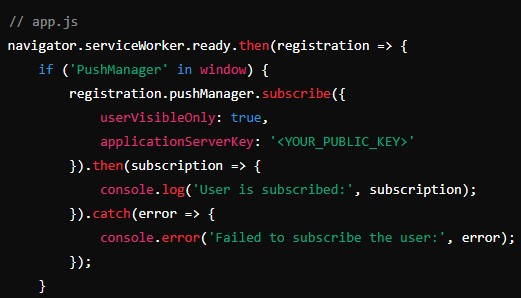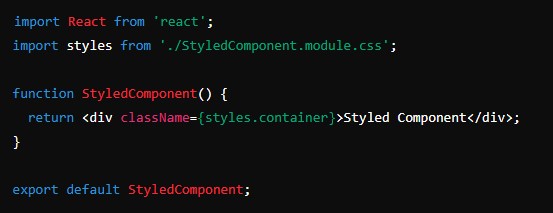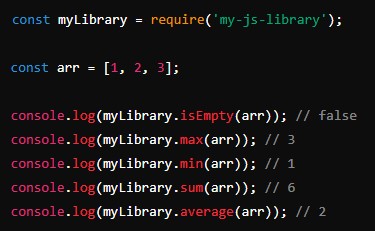In the realm of web development, delivering a seamless and engaging user experience across various devices and network conditions is a top priority. Progressive Web Apps (PWAs) are a revolutionary approach that merges the best aspects of web and native applications. With the power of JavaScript, developers can create PWAs that are reliable, fast, and immersive. This article provides a comprehensive introduction to PWAs in JavaScript, exploring their features, benefits, and the process of building them.
Building a Real-Time Dashboard
What are Progressive Web Apps?
Progressive Web Apps (PWAs) are web applications enhanced with modern web technologies to provide an experience similar to native mobile apps. They are built using standard web technologies such as HTML, CSS, and JavaScript but offer advanced features like offline access, push notifications, and home screen installation.
PWAs were introduced by Google engineers Alex Russell and Frances Berriman in 2015. The key idea behind PWAs is progressive enhancement, which means they are designed to work for all users, regardless of their browser capabilities, but offer enhanced functionality for those with modern browsers.
Key Features of PWAs
- Progressive Enhancement: PWAs are built with a baseline of features that work across all browsers, but they progressively enhance the user experience based on the capabilities of the user’s device and browser.
- Responsive Design: PWAs are responsive, meaning they adapt to different screen sizes and orientations, providing a consistent experience across desktops, tablets, and smartphones.
- Offline Capability: Service workers, a core technology behind PWAs, enable offline functionality by caching resources and intercepting network requests. This allows users to access the app even without an internet connection.
- App-like Interactions: PWAs offer app-like interactions and navigation, mimicking the behavior of native mobile apps with smooth animations, responsive gestures, and a full-screen interface.
- Installable: Users can install PWAs on their home screens without needing to go through an app store. This provides quick access to the app and a more immersive experience.
- Push Notifications: PWAs can send push notifications to re-engage users with timely updates and personalized content, enhancing user engagement.
- Secure: PWAs are served over HTTPS, ensuring a secure connection between the user and the server, protecting data and providing a trustworthy experience.
Benefits of Progressive Web Apps
- Enhanced User Engagement: PWAs provide a seamless and engaging user experience, leading to higher user retention and satisfaction. Features like push notifications and home screen access help keep users engaged and returning to the app.
- Improved Performance: By leveraging service workers and caching, PWAs load quickly and provide a smooth experience even on slow or unreliable networks. This results in faster page loads and reduced bounce rates.
- Cross-Platform Compatibility: PWAs are designed to work across various devices and operating systems, eliminating the need for separate codebases for different platforms. This reduces development time and costs.
- Ease of Distribution: Unlike native apps, which require approval and distribution through app stores, PWAs can be distributed directly through the web. This simplifies the deployment process and ensures users always have access to the latest version.
- Cost-Effective Development: Developing a Progressive Web Apps (PWAs) are a revolutionary approach that merges the best aspects of web and native applications. can be more cost-effective than building separate native apps for iOS and Android. A single codebase can be used to reach a wider audience, reducing development and maintenance costs.
- SEO Benefits: PWAs are indexable by search engines, improving their discoverability and driving organic traffic. This is a significant advantage over native apps, which are often hidden behind app store search mechanisms.
Building a Progressive Web App with JavaScript
Creating a Progressive Web Apps (PWAs) are a revolutionary approach that merges the best aspects of web and native applications. involves several key steps and technologies. Here’s a high-level overview of the process, focusing on the role of JavaScript:
Step 1: Responsive Web Design
The first step in building a Progressive Web Apps (PWAs) are a revolutionary approach that merges the best aspects of web and native applications. is to ensure that your app is responsive. This means that the layout and elements of your app should adapt to different screen sizes and orientations. You can achieve this using CSS media queries or responsive design frameworks like Bootstrap.
<!DOCTYPE html>
<html lang="en">
<head>
<meta charset="UTF-8">
<meta name="viewport" content="width=device-width, initial-scale=1.0">
<title>My PWA</title>
<link rel="stylesheet" href="styles.css">
</head>
<body>
<header>
<h1>Welcome to My PWA</h1>
</header>
<main>
<p>This is a simple PWA example.</p>
</main>
<script src="app.js"></script>
</body>
</html>Step 2: Service Workers
Service workers are a core technology behind PWAs. They are JavaScript files that run in the background and intercept network requests, allowing your app to cache resources and function offline.
To register a service worker, create a service-worker.js file and register it in your main JavaScript file (app.js).
// app.js
if ('serviceWorker' in navigator) {
window.addEventListener('load', () => {
navigator.serviceWorker.register('/service-worker.js')
.then(registration => {
console.log('Service Worker registered with scope:', registration.scope);
})
.catch(error => {
console.error('Service Worker registration failed:', error);
});
});
}In the service-worker.js file, you can define caching strategies and handle fetch events.
// service-worker.js
const CACHE_NAME = 'my-pwa-cache-v1';
const urlsToCache = [
'/',
'/styles.css',
'/app.js'
];
self.addEventListener('install', event => {
event.waitUntil(
caches.open(CACHE_NAME)
.then(cache => {
return cache.addAll(urlsToCache);
})
);
});
self.addEventListener('fetch', event => {
event.respondWith(
caches.match(event.request)
.then(response => {
return response || fetch(event.request);
})
);
});Step 3: Web App Manifest
The web app manifest is a JSON file that provides metadata about your app, such as its name, icons, and theme colors. This file is essential for making your app installable.
Create a manifest.json file and link it in your HTML file.
{
"name": "My PWA",
"short_name": "PWA",
"start_url": "/",
"display": "standalone",
"background_color": "#ffffff",
"theme_color": "#000000",
"icons": [
{
"src": "icon-192x192.png",
"sizes": "192x192",
"type": "image/png"
},
{
"src": "icon-512x512.png",
"sizes": "512x512",
"type": "image/png"
}
]
}Link the manifest file in your HTML.
<!DOCTYPE html>
<html lang="en">
<head>
<meta charset="UTF-8">
<meta name="viewport" content="width=device-width, initial-scale=1.0">
<title>My PWA</title>
<link rel="stylesheet" href="styles.css">
<link rel="manifest" href="/manifest.json">
</head>
<body>
<header>
<h1>Welcome to My PWA</h1>
</header>
<main>
<p>This is a simple PWA example.</p>
</main>
<script src="app.js"></script>
</body>
</html>Step 4: HTTPS
Serving your app over HTTPS is crucial for security and enabling features like service workers and push notifications. Ensure your server is configured to use HTTPS.
Step 5: Push Notifications
Push notifications are a powerful way to re-engage users. Implementing push notifications requires integrating with a push notification service and handling user subscriptions.
First, request permission from the user.
// app.js
if ('Notification' in window && navigator.serviceWorker) {
Notification.requestPermission(status => {
console.log('Notification permission status:', status);
});
}Next, subscribe the user to push notifications.
// app.js
navigator.serviceWorker.ready.then(registration => {
if ('PushManager' in window) {
registration.pushManager.subscribe({
userVisibleOnly: true,
applicationServerKey: '<YOUR_PUBLIC_KEY>'
}).then(subscription => {
console.log('User is subscribed:', subscription);
}).catch(error => {
console.error('Failed to subscribe the user:', error);
});
}
});Step 6: Performance Optimization
Optimizing your app’s performance is crucial for a smooth user experience. Use tools like Google’s Lighthouse to identify performance bottlenecks and suggest improvements. Common techniques include minimizing resource sizes, lazy loading images, and implementing efficient caching strategies.
Step 7: Testing and Deployment
Thoroughly test your Progressive Web Apps (PWAs) are a revolutionary approach that merges the best aspects of web and native applications. across different browsers and devices to ensure a consistent experience. Once tested, deploy your app to a web server and make it available to users.
Case Studies: Successful PWAs
Several high-profile companies have successfully implemented PWAs, reaping significant benefits. Here are a few notable case studies:
- Pinterest: Pinterest’s Progressive Web Apps (PWAs) are a revolutionary approach that merges the best aspects of web and native applications. resulted in a 60% increase in core engagements, a 44% increase in user-generated ad revenue, and a 40% increase in average time spent on the app compared to their previous mobile web experience. The PWA loads quickly, works offline, and provides an app-like experience
, driving higher user engagement.
- Starbucks: Starbucks’ Progressive Web Apps (PWAs) are a revolutionary approach that merges the best aspects of web and native applications. allows customers to browse the menu, customize orders, and add items to their cart without an internet connection. The app is 99.84% smaller than their native app, making it accessible to users with limited data plans or storage. This resulted in doubling the number of daily active users.
- Uber: Uber’s Progressive Web Apps (PWAs) are a revolutionary approach that merges the best aspects of web and native applications. is designed to be fast and reliable even on 2G networks. The app loads in less than 3 seconds on 2G, providing a seamless booking experience for users with slow or unreliable internet connections. This has expanded their reach to new markets and increased user engagement.
The Future of Progressive Web Apps
The future of PWAs looks promising, with continuous advancements in web technologies and increasing adoption by businesses across various industries. Here are a few trends and predictions for the future of PWAs:
- Broader Browser Support: As browser vendors continue to enhance support for Progressive Web Apps (PWAs) are a revolutionary approach that merges the best aspects of web and native applications. features, the capabilities and performance of PWAs will improve, making them an even more compelling choice for developers.
- Enhanced Capabilities: Emerging web technologies like WebAssembly and WebRTC will enable PWAs to perform more complex tasks, further narrowing the gap between web and native apps.
- Greater Integration with OS: Operating systems are increasingly integrating Progressive Web Apps (PWAs) are a revolutionary approach that merges the best aspects of web and native applications. support, providing deeper integration and a more seamless user experience. For instance, Windows and Chrome OS already offer robust PWA support, and other platforms are likely to follow suit.
- Increased Adoption by Enterprises: As the benefits of Progressive Web Apps (PWAs) are a revolutionary approach that merges the best aspects of web and native applications. become more widely recognized, more enterprises will adopt them to provide enhanced user experiences and streamline their development processes.
- Improved Developer Tools: The development ecosystem for PWAs will continue to evolve, with better tools and frameworks emerging to simplify the creation and deployment of PWAs.
Conclusion
Progressive Web Apps represent a significant advancement in web development, offering a powerful and flexible solution for delivering high-quality user experiences across devices and networks. By combining the best features of web and native applications, Progressive Web Apps (PWAs) are a revolutionary approach that merges the best aspects of web and native applications. are poised to become the standard for modern web development. Whether you’re an e-commerce business looking to boost conversions, a media company aiming to deliver fast and reliable content, or a developer seeking to create engaging and accessible applications, PWAs offer a compelling and future-proof solution. As the web continues to evolve, the adoption and capabilities of PWAs will only grow, making them an essential part of the digital landscape.




